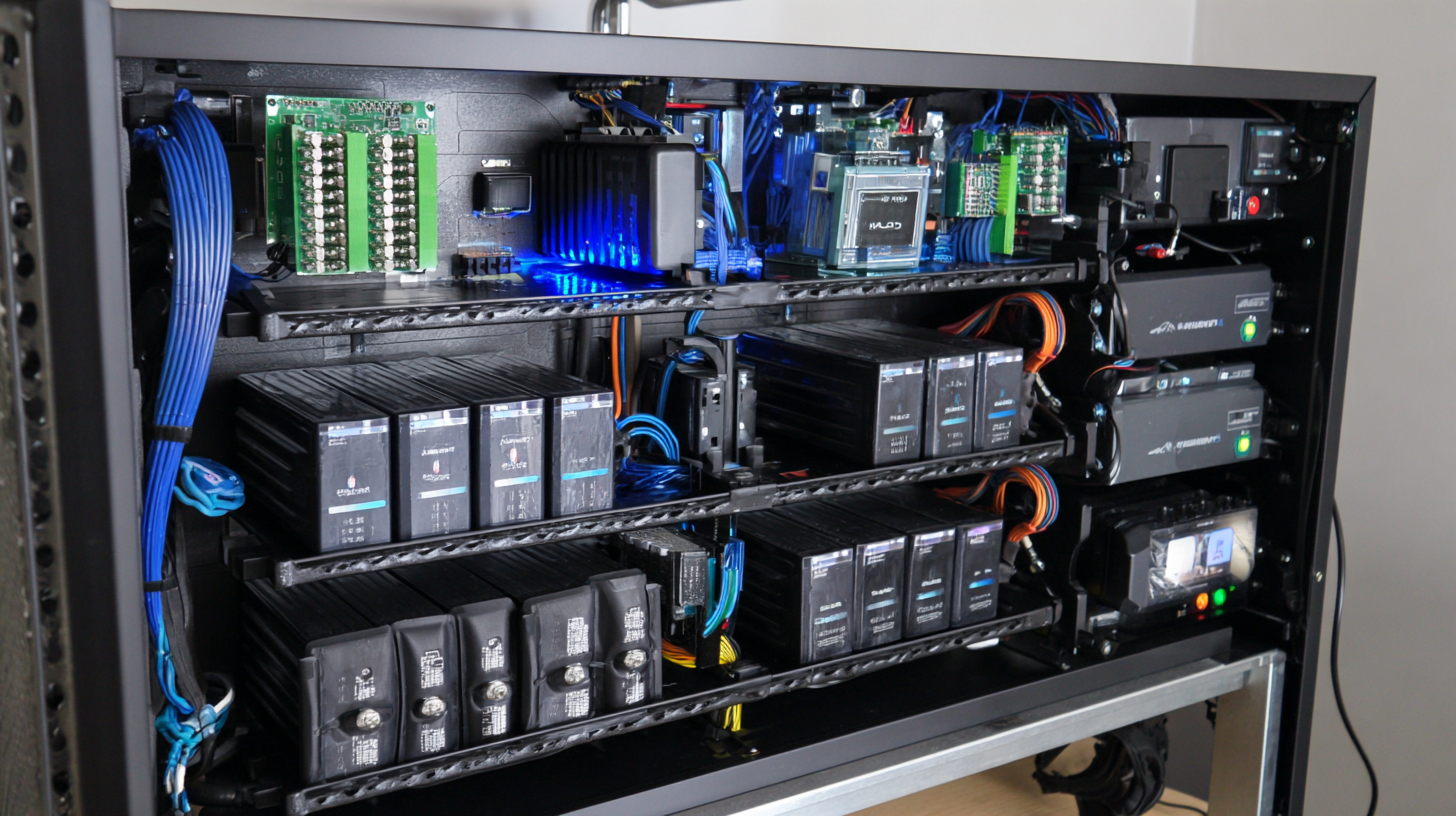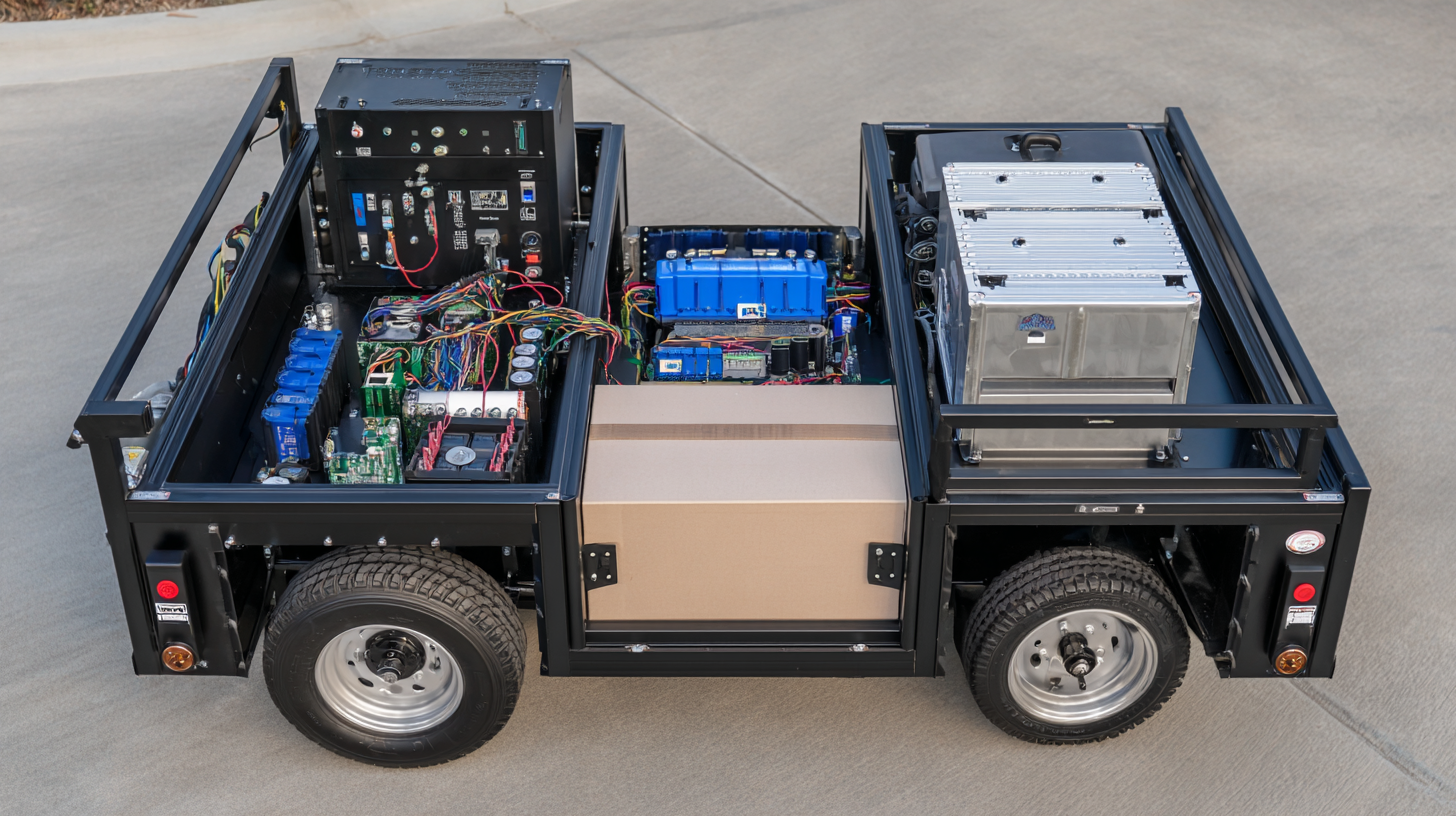
-
Home
-
Company
-
Products
-
News
-
FAQs
-
Blog
-
Contact
-
Phone
-
E-mail
-
Whatsapp
Leave Your Message

In today's fast-paced world, maximizing energy efficiency is crucial for both residential and commercial applications. The advent of advanced lithium battery technology has significantly transformed how we approach energy storage and usage. Specifically, the 48V 150A lithium battery is quickly becoming the go-to solution for many energy needs.
According to a report by the International Energy Agency, the demand for efficient energy storage systems is projected to surge, with lithium-ion batteries accounting for over 90% of the global market by 2025. This shift is primarily due to their high energy density, rapid charging capabilities, and longer lifespan compared to traditional lead-acid batteries.
By harnessing the power of a 48V 150A lithium battery, users can not only enhance their energy efficiency but also contribute to a more sustainable future.
In this blog, we will explore various strategies to maximize the efficiency of your energy systems using this innovative technology.

Understanding the basics of 48V 150A lithium batteries is essential for optimizing energy applications. These batteries are increasingly favored for their balance of power output and energy density, effectively supporting a variety of renewable energy systems, especially when paired with solar and wind technologies. A recent review highlighted that lithium-ion batteries (LIBs) using nickel-rich cathode materials can enhance energy efficiency and safety, making them a solid choice for larger energy storage needs. In practical terms, a 48V 150A system offers a total capacity of 7,200Wh, which is significant for off-grid applications and can sustain high-load devices and systems.
Moreover, as the demand for effective energy storage grows, the circular economy surrounding LIBs is gaining attention. Efficient recycling methods are in focus, as a substantial accumulation of spent batteries is projected in the coming years. The integration of cellulose as a natural polymer in battery design shows great promise for creating sustainable, high-performance energy storage solutions. By emphasizing these advancements, users can explore how leveraging 48V 150A lithium batteries can not only meet their energy needs but also contribute to a more sustainable future in energy consumption.

The transition from traditional lead-acid batteries to 48V lithium batteries marks a significant evolution in energy storage solutions, especially for residential and commercial applications. One of the standout advantages of 48V lithium batteries is their impressive energy density. For instance, a typical 48V lithium battery can deliver over 3 times the storage capacity compared to a similar weight of lead-acid batteries, making them much more efficient for both off-grid and grid-tied solar systems. This efficiency directly translates to lower overall energy costs and reduced frequency of energy storage system replacement, as lithium batteries often come with longer cycle lives—commonly exceeding 5,000 cycles.
Moreover, lithium batteries exhibit higher discharge rates, enabling better performance for high-drain applications. This characteristic allows for a more consistent power supply, which is critical for energy demands that fluctuate throughout the day. Companies now leverage these benefits, as evidenced by recent market movements where major technological players are opting for lithium over traditional batteries. This shift is reflected in the significant promotion of 15kWh lithium battery storage systems tailored for solar applications, highlighting an industry trend towards enhancing both efficiency and sustainability. With these advancements, lithium batteries are positioned as the go-to solution for meeting modern energy needs effectively.
When configuring a 48V 150A lithium battery for optimal efficiency, it's crucial to consider both the sizing and configuration of your system. According to the National Renewable Energy Laboratory (NREL), lithium batteries can achieve up to 90% efficiency when properly sized, which significantly enhances performance in various applications ranging from renewable energy systems to electric vehicles. Ensuring that the battery capacity aligns with your energy demands can prevent energy loss and prolong battery life.
**Tips:** Always match your battery size with the expected load. A battery too small for your needs can lead to excessive cycling, while an oversized battery may incur unnecessary costs and space requirements. Consider utilizing a battery management system (BMS) that monitors voltage, current, and temperature for real-time adjustments.
Additionally, the configuration of your battery system—such as series or parallel connections—also impacts efficiency. Research indicates that connecting batteries in parallel can improve discharge capacity while maintaining voltage levels. Using high-quality connections and ensuring uniform battery cells can reduce resistance and enhance energy transfer, optimizing overall system performance.
**Tips:** When configuring your battery system, always use high-quality cabling and connectors to minimize energy loss through heat, aiming for a configuration that balances power needs with manufacturer recommendations to maximize the lifespan of your lithium battery setup.
| Parameter | Value | Unit |
|---|---|---|
| Nominal Voltage | 48 | V |
| Nominal Capacity | 150 | A |
| Total Energy | 7200 | Wh |
| Weight | 45 | kg |
| Cycle Life | 2000 | Cycles |
| Charge Time | 2 | Hours |
| Discharge Rate | 1C | - |
| Depth of Discharge (DoD) | 80 | % |
| Operating Temperature Range | -20 to 60 | °C |
When utilizing a 48V 150A lithium battery, safety and maintenance are key to maximizing efficiency and ensuring longevity. Lithium batteries are renowned for their high energy density and long cycle life, with some studies indicating that they can have a lifespan of up to 10 years if properly maintained. Regular inspection for physical damage, overheating, or any swelling is vital. It's also important to keep the battery in a temperature-controlled environment; an ideal range is between 20°C and 25°C, as extended exposure to extreme temperatures can drastically reduce capacity and lifespan.
In addition to physical inspections, users should also implement proper charging practices. Overcharging can lead to thermal runaway, a serious safety risk. According to industry guidelines, charging should be done with a compatible charger specifically designed for lithium batteries. To further enhance safety, users should consider installing battery management systems (BMS) that monitor voltage, current, and temperature in real-time. These systems can prevent over-discharge and overcharge scenarios, ensuring that the battery operates within safe parameters. With appropriate care and adherence to these safety considerations, a 48V 150A lithium battery can effectively meet energy needs well into the future.
The adoption of 48V 150A lithium batteries is becoming increasingly prevalent in various real-world applications, particularly in stationary energy storage systems. A recent techno-economic analysis highlights significant advantages of lithium-ion batteries over traditional lead-acid batteries, showcasing their superior energy density and efficiency. For instance, lithium-ion batteries can achieve a round-trip efficiency of up to 90%, compared to approximately 80% for lead-acid alternatives. This efficiency translates directly into cost savings over time, especially when integrated with photovoltaic systems.
Incorporating 48V 150A lithium batteries into energy systems enables scalability and adaptability for residential and commercial users alike. Case studies have demonstrated successful deployments in solar storage applications, where these batteries store excess energy generated during the day for use during peak demand hours. One noteworthy example showed a 30% increase in energy savings when using lithium batteries in conjunction with solar panels, greatly improving return on investment.
Tips: When planning to integrate a 48V 150A lithium battery system, ensure that your installation includes proper monitoring systems to track battery performance. Additionally, considering the lifecycle and recycling options for lithium batteries can further enhance sustainability efforts in energy management. Always consult with industry experts to evaluate the most suitable applications tailored to your specific energy needs.






